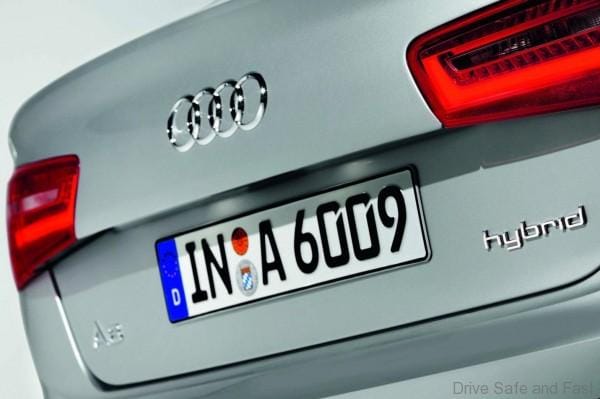This article was based on Audi’s nomenclature at September 2018.
Whether you’re aware of it or not, many car manufacturers have logical naming schemes. Most car enthusiasts know these by heart, but we thought we’d do a little deconstructing and reconstructing for the sake of it.
Before we get into it, it’s worth noting that these logical naming schemes, or ‘nomenclatures’ are usually done by premium car brands. So, in part 1, we’ll cover Audi’s Nomenclature.
Keep in mind that this is more of a guide to the current nomenclature than a 100% accurate dissection that will stand up against close scrutiny or the test of time. We’re also going to avoid talking about chassis designations, which will change with every generation of the model. Also bear in mind that Audi is in the middle of changing their power indicator naming convention in some markets.

Let’s begin.
Now, a typical Audi model is casually referred to in the following way:
“Audi A6”
But if you search “Audi A6” on a typical listing site, you will find many, many variants. Let’s take a slightly uncommon variant as an example:
“Audi A6 Avant 3.0 V6 TFSI quattro S-Line”

Now, let’s break that down into bite-size chunks.
1. A6 Avant 3.0 V6 TFSI quattro S-Line
In an Audi, the first one (or sometimes two letters) usually denotes the category of car it is. Here are examples of what letters can go here and what they mean.
A = Hatchback, sedan and wagon models tuned for the general customer
S = Hatchback, sedan and wagon models tuned for more high performance
RS = Hatchback, sedan and wagon models tuned for maximum performance (Rennsport or Racing Sport)
Q = Crossover and SUV models tuned for the general customer
SQ = Crossover and SUV models tuned for more performance
The two special exceptions that break the naming rules are these:
TT = which is only used for their sports coupe/roadster. It’s worth noting that the performance variants of the TT are called the TT S and TT RS, which also flies in the face of Audi’s own naming rules
R = which is only used on the R8, the flagship supercar model
e-tron = an upcoming pure electric SUV model and category of electric models that have yet to be fleshed out
2. A6 Avant 3.0 V6 TFSI quattro S-Line
The second component of an Audi model name is the numbering system. Broadly speaking, the numbers indicate size and prestige level. Here are three guiding rules for this part of the naming scheme:
- When it comes to ‘S’ and ‘RS’ models, they are often souped up versions of the basic ‘A’ model (for example A4 is the basis on which the S4 and RS4 are built).
- At the same time, two different models with the same number in the name does not always mean they are directly related (A8 and R8, for example are very different) but indicate a similar level of importance in the product portfolio.
- At the same time, some models with different letters and numbers can share a few core mechanical components (A4, A5, and Q5 for example are mechanically related in many ways). But the numbers are not primarily used to indicate mechanical similarity.
Audi uses the following numbers for the following types of vehicles:
1 = A1
2 = A2, Q2
3 = A3, Q3,
4 = A4, S4, RS4
5 = A4, A5, S5, RS5, Q5, SQ5
6 = A6, S6, RS6
7 = A7, S7, RS7, Q7, SQ7
8 = A8, S8, RS8, Q8, SQ8
9 = upcoming models
* the longwheelbase versions of the A6 and A8 add an ‘L’ after their names (example: A6 L, A8 L)
3. A6 Avant 3.0 V6 TFSI quattro S-Line
This part of the name is usually hidden or not spoken about. In fact, it’s usually only present if the car is a wagon (Avant), 4-door coupe (Sportback), Coupe, Roadster, or Spyder. If it’s a hatchback, sedan, crossover or SUV, it is usually not indiciated here.
4. A6 Avant 3.0 V6 TFSI quattro S-Line
Part 4 is all about the powertrain/engine. I’ve broken it down further into parts 4.1 – 4.4.
4.1 A6 Avant 3.0 V6 TFSI quattro S-Line
This used to be my favourite part about Audi names but now it’s being changed. Traditionally, Audi would indicate here the displacement of the engine in litres accurate to a single decimal point. So 3.0 means a 3-litre engine. 2.0 means 2-litre engine. Simple, accurate, perfect. Here are some common Audi displacements:
1.4
1.8
2.0
2.5
3.0
4.2
5.2
But future models will use numbers between 30 and 70 to indicate how powerful they are in relation to each other. Audi says the reason for this change is because electrification and turbocharging is making engine displacement a more inaccurate way to measure power.
So they’ve come up with a seemingly arbitrary way to categorise power outputs, regardless of fuel type.
30 = 109-128 hp (81-96 kW)
35 = 147-160 hp (110-120 kW)
40 = 167-201 hp (125-150 kW)
45 = 226-248 hp (169-185 kW)
50 = 281-308 hp (210-230 kW)
55 = 328-368 hp (245-275 kW)
60 = 429-455 hp (320-340 kW)
70 = 536+ hp (400+ kW)
(Thanks to reader Limpek for the improved list of outputs)
4.2 A6 Avant 3.0 V6 TFSI quattro S-Line
An extension of the above, this part of the name indicates what configuration the engine is in. Usually it’s only indicated for engines with six or more cylinders. V6, V8, V10 and etc. It’s possible that with further electrification, and smaller engines this part may soon be dropped too.
4.3 A6 Avant 3.0 V6 TFSI quattro S-Line
This part denotes the type of engine tech or fuel type.
FSI – Fuel Stratified Injection (petrol)
TFSI – Turbocharged Fuel Stratified Injection (petrol)
TDI – Turbocharged Direct Injection (diesel)
4.4 A6 Avant 3.0 V6 TFSI quattro S-Line
In models that use electric, plug-in or hybrid technology, you’ll find the following terms instead of or before the engine designation
e-tron – plug-in hybrid electric vehicle (example: Audi A3 Sportback e-tron)
hybrid – hybrid (example: Audi A6 hybrid)

5. A6 Avant 3.0 V6 TFSI quattro S-Line
Back in the day, when nomenclature meant nothing to the Germans and disorder ruled the car industry, the Audi Quattro referred to an actual car model. Nowadays, quattro either refers to one of Audi’s performance divisions or, in this case, their 4-wheel drive system.
If an Audi is equipped with quattro, you’ll usually find it indicated after the powertrain section of the name.
Sometimes, if equipped with Audi’s dual-clutch automatic transmission, ‘S-Tronic’ will be indicated, but this is no always the case as automatics are becoming the norm in most markets.
6. A6 Avant 3.0 V6 TFSI quattro S-Line
Say you’re happy with the performance of a standard Audi but want the bodykit and equipment of the fancier Audis. You can usually order an ‘S-Line’ kit. You’ll usually get nicer rims, bumpers, side skirts, etc. Interior trim pieces and the steering wheel can also be a part of this upgrade.
Right at the end is where you find this indicated if equipped.
CLOSING REMARKS
We hope this article helped you understand how Audis are named, and what each part of the name means. Again, this is just a general guideline and not hardcore rules that are followed 100% of the time.
We have other nomenclature guides for the following premium brands:
thank you for your article
apologies in advance for pointing out the following
there are a few typo errors
2.
5 = A5 ..
7 = .. SQ7
8 = .. SQ8
4.
30 = 109-128 hp (81-96 kW)
35 = 147-160 hp (110-120 kW)
40 = 167-201 hp (125-150 kW)
45 = 226-248 hp (169-185 kW)
50 = 281-308 hp (210-230 kW)
55 = 328-368 hp (245-275 kW)
60 = 429-455 hp (320-340 kW)
70 = 536+ hp (400+ kW)
(there is no “130” as you mentioned)
also more importantly
can anyone please shed light on AUDI sales (and “red tape” ) because they have stopped selling the new models
they are more like second hand car dealers this year
why are there no articles about AUDI dealership problems
thanks again
Hi Limpek,
Thanks for your comment, I hope you don’t mind if we include the information in our article! Yes, a few things like the ‘130’ slipped through the initial draft.
As for Audi Malaysia, they’ve basically been put on standby mode while they look for a new local partner. Right now you can still buy, service and claim warranties through the existing dealer network, but most of the core responsibilities are being handled by Singapore while the “new and improved” Audi Malaysia returns. Perhaps even with CKD.